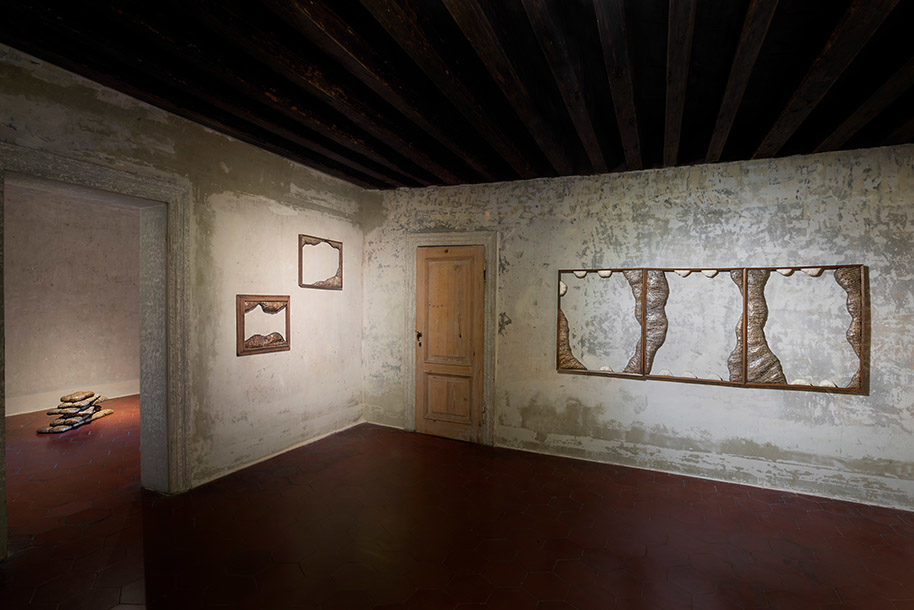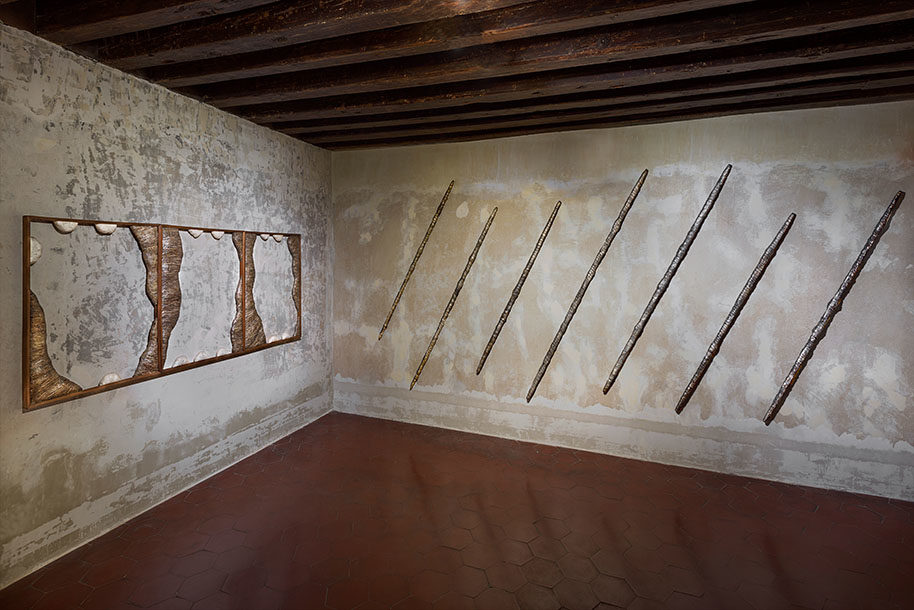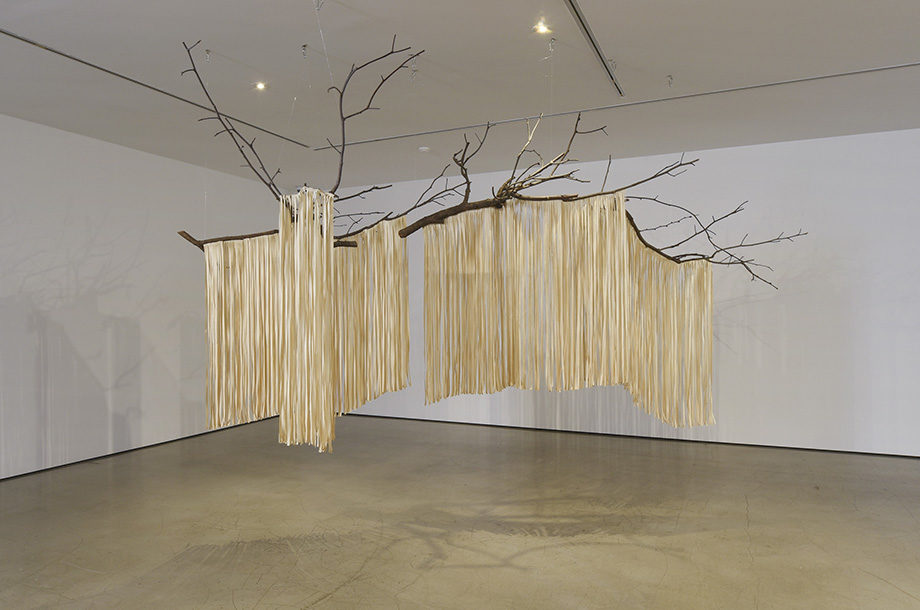Seung-taek LeeExhibitions
Seung-taek Lee
Gallery Hyundai and Lévy Gorvy are pleased to announce an exhibition of Korean artist Seung-taek Lee (b. 1932). This show affords an intimate and focused look at Lee’s rarely seen works derived from paper and stones created in the 1970s and early 1980s, offering new insights into an oeuvre defined by its elegant and unconventional approach to the lyricism and malleability of form.
A solitary figure unbound by the strictures of a movement or group, Lee has described the artist’s task as that of “connecting different worlds in search of another realm.” His art moves between the material and the metaphysical, conceiving art and philosophy as parallel pursuits. Privileging no single medium, his oeuvre spans several, incorporating aspects of painting, drawing, sculpture, installation, and performance, often within the same piece. Notions of negation—which he alternately refers to as “dematerialization,” “anti-concept,” and “non-sculpture”—structure his approach, by which he transforms ordinary objects, imbuing them with multiple meanings and affects. Embracing invisible forces and unorthodox materials such as tree branches, wire, stones, human hair, fabric, and rope, his art elevates the mundane to the level of myth. At once emphatically abstract and culturally specific, it draws on the subtle, unassuming beauty of Korean aesthetic traditions and folk art. Rooted in a concrete poetics of place, it reflects contemporaneous developments in Earth Art, Mono-ha, and Post-Minimalism while maintaining resolute independence from any of its peer groups.
Sited in the historic Palazzo Caboto, the exhibition opens with a work from Lee’s Godret Stone series. Begun in 1958, the series’ title alludes to the small stones used by Korean artisans to weight traditional mats while weaving. Grooved and hung from wooden bars with rope, the stones appear to float, thus belying their solid physicality. Such suspensions of expectation are typical of Lee’s practice, which lingers on the discrepancies between appearance and reality.
Beginning in the late 1960s, Lee turned to the representation of immaterial phenomena in nature such as wind, fire, water, smoke, and fog. Video documentation of his 1977 performance, Wind-Folk Amusement, here on view, finds Lee and his collaborators unfurling strips of scarlet cloth into the sky. Nearby, a grouping of tree branches draped with paper responds to the room’s ambient drafts and breezes, figuring air’s formless force in a more delicate register. The following floor focuses on Lee’s works in paper. Dating from the late 1970s and early 1980s, these pieces treat paper as a sculptural medium, manipulating its surface through a succession of presses and folds that produce fleeting plays of light and shadow. Paired with tied books and bowls, they demonstrate the artist’s inclination toward anti-form and anti-sculpture, enabling their viewer to imagine the gestures with which they were made. The final floor highlights Lee’s tied stones and ceramics. Deferring to the Korean tradition of onggi, a type of earthenware common in households, the latter collapse conventional hierarchies of fine art and craft, affirming Lee’s assertion that “the most local is the most universal.”
Lee’s work resides in the permanent collections of museums and institutions worldwide, including the Tate Modern, London; the National Museum of Modern and Contemporary Art, Korea, Seoul; and the Museum of Contemporary Art Australia, Sydney. Solo exhibitions of Lee’s work have been held at the Sungkok Art Museum, Seoul and the Arko Art Center, Seoul. He received the Nam June Paik Art Center Prize in 2009 and the Eungwan Order of Cultural Merit from the Korean Ministry of Culture in 2014.








